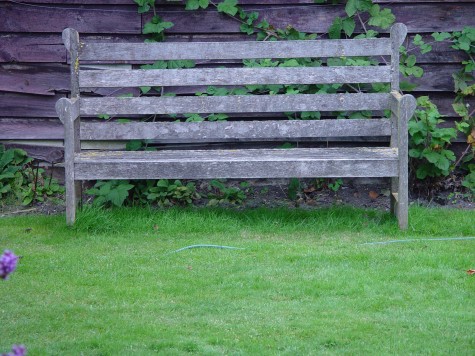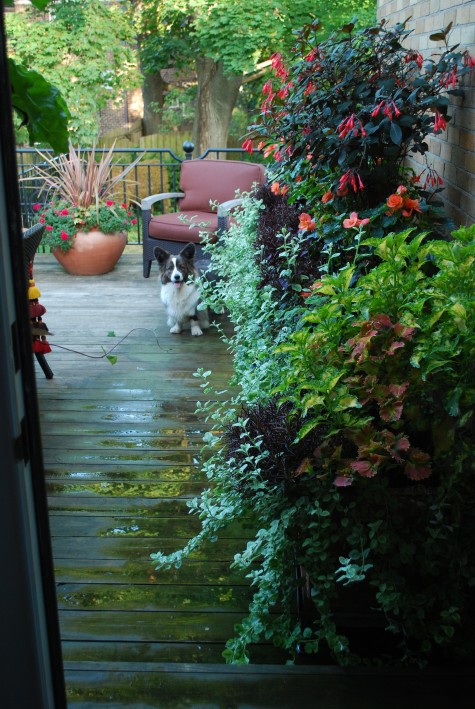 There are plenty of evenings during the course of the summer that I don’t have dinner outdoors-It could be too hot, or too buggy, or I might just be too tired to take everything outside only to have to bring it back in again. I also believe I have no end of summer days to choose from, but end they do. Yesterday it was benignly summer; today the weather is is cold and blustering towards fall. I know when I start coming to work in the dark, the close of summer can’t be far behind. As many nights as possible now, we all have dinner outdoors.
There are plenty of evenings during the course of the summer that I don’t have dinner outdoors-It could be too hot, or too buggy, or I might just be too tired to take everything outside only to have to bring it back in again. I also believe I have no end of summer days to choose from, but end they do. Yesterday it was benignly summer; today the weather is is cold and blustering towards fall. I know when I start coming to work in the dark, the close of summer can’t be far behind. As many nights as possible now, we all have dinner outdoors.
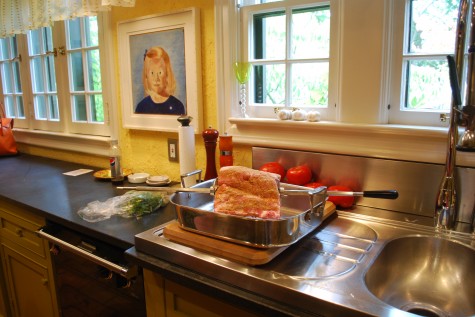 Buck does all the cooking-lucky for me. My idea of dinner on my own consists of cans of black olives, chick peas, tinned tuna, slabs of good cheese and chips of some sort. I am also likely to eat this over the sink; who would make the effort to set a table, and then wash dishes over this? On my own, I don’t cook, I survive. I take care of what needs doing in support of the cooking, and I am happy with this arrangement. Buck decides to do a roast on the grill for our close of summer dinner.
Buck does all the cooking-lucky for me. My idea of dinner on my own consists of cans of black olives, chick peas, tinned tuna, slabs of good cheese and chips of some sort. I am also likely to eat this over the sink; who would make the effort to set a table, and then wash dishes over this? On my own, I don’t cook, I survive. I take care of what needs doing in support of the cooking, and I am happy with this arrangement. Buck decides to do a roast on the grill for our close of summer dinner.
 One doesn’t need to cook in order to appreciate great china. I could get out of hand easily; there are plenty of great china patterns out there. I get by with 2 sets; one is on permanent view on a shelf just sixteen inches below the ceiling in my kitchen. I take it down once a year to wash it; it’s out of the way, but always there for me to see. I built a painted Welsh cabinet for my other set. It took a long time to accumulate a service for eight, and even more time for the platters, breadbaskets and such. It was worth the wait; it is as much pleasure to look at as it is functional.
One doesn’t need to cook in order to appreciate great china. I could get out of hand easily; there are plenty of great china patterns out there. I get by with 2 sets; one is on permanent view on a shelf just sixteen inches below the ceiling in my kitchen. I take it down once a year to wash it; it’s out of the way, but always there for me to see. I built a painted Welsh cabinet for my other set. It took a long time to accumulate a service for eight, and even more time for the platters, breadbaskets and such. It was worth the wait; it is as much pleasure to look at as it is functional.
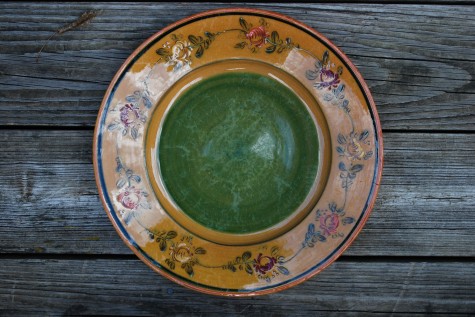 This French china is handmade by Veronique Pichon. None of her pieces have that perfect shape and repetition of design characteristic of machine made china. It is heavy, chunky and chip resistant-a good choice for china used outdoors. The green and ochre ground, with handpainted pink and rose flowers, looks good set in my garden.
This French china is handmade by Veronique Pichon. None of her pieces have that perfect shape and repetition of design characteristic of machine made china. It is heavy, chunky and chip resistant-a good choice for china used outdoors. The green and ochre ground, with handpainted pink and rose flowers, looks good set in my garden.
 My stainless flatware has olivewood handles set in pewter ferrules. The color variation in the wood has everything to do with the dishwasher. The handles of the utensils I use every day have gone dark. As we only have dessert once in a great while, the olivewood is still pale colored. As much as I like limestone steps that are worn from all the walking, I like things that look like they have been used.
My stainless flatware has olivewood handles set in pewter ferrules. The color variation in the wood has everything to do with the dishwasher. The handles of the utensils I use every day have gone dark. As we only have dessert once in a great while, the olivewood is still pale colored. As much as I like limestone steps that are worn from all the walking, I like things that look like they have been used.
 Of course we need flowers. The boltonia, Japanese anemone and asparagus from the garden look good in a McCoy ceramic vase from the forties. Cut flowers last such a long time outdoors-it must be the light. Cut flowers have a decidedly different feeling than flowers planted in the ground, as they are arranged.
Of course we need flowers. The boltonia, Japanese anemone and asparagus from the garden look good in a McCoy ceramic vase from the forties. Cut flowers last such a long time outdoors-it must be the light. Cut flowers have a decidedly different feeling than flowers planted in the ground, as they are arranged.
 Buck loves to cook, and he says the rotisserie on the grill makes the work of it easy. If you are not a fan of cleaning the oven, cleaning a drip pan takes a lot less time and effort. The big design idea here-a terrace which is close to the kitchen makes it as easy to dine outside as it is to picnic-maybe easier. Good tools make quick work of the prep and cleanup. Sturdy china doesn’t mind being stacked for the trip back to the kitchen.
Buck loves to cook, and he says the rotisserie on the grill makes the work of it easy. If you are not a fan of cleaning the oven, cleaning a drip pan takes a lot less time and effort. The big design idea here-a terrace which is close to the kitchen makes it as easy to dine outside as it is to picnic-maybe easier. Good tools make quick work of the prep and cleanup. Sturdy china doesn’t mind being stacked for the trip back to the kitchen.
 I like fresh food simply prepared-probably as I have been exposed to how good that can be. Food for me is not the main attraction-it is the place, the friends, the season and the weather and the food all rolled together that makes for a great time.
I like fresh food simply prepared-probably as I have been exposed to how good that can be. Food for me is not the main attraction-it is the place, the friends, the season and the weather and the food all rolled together that makes for a great time.
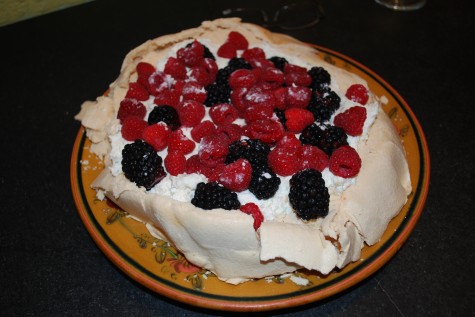 A pavlova for dessert-definitely out of the ordinary. A shell formed from a baked meringue is loaded with whipped cream and mascarpone cheese; this melt in your moth extravaganza is topped with a mix of the fruit of the season. Invented in New Zealand in honor of a visit by Anna Pavlova, it is my favorite summer dessert.
A pavlova for dessert-definitely out of the ordinary. A shell formed from a baked meringue is loaded with whipped cream and mascarpone cheese; this melt in your moth extravaganza is topped with a mix of the fruit of the season. Invented in New Zealand in honor of a visit by Anna Pavlova, it is my favorite summer dessert.
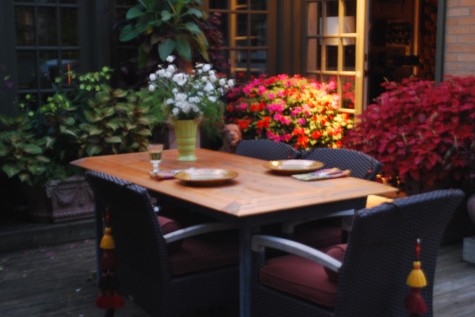
The dark is coming early now. The porch light is on for the first time in a very long time. Though we will no doubt get a few more chances to have dinner outside, we might need to bring blankets. Though I regret the changing of the season, I am glad to have had for a time however short, a good gardening summer.
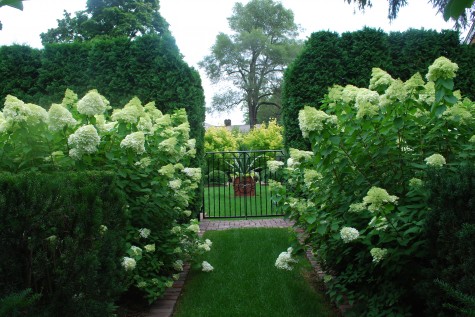
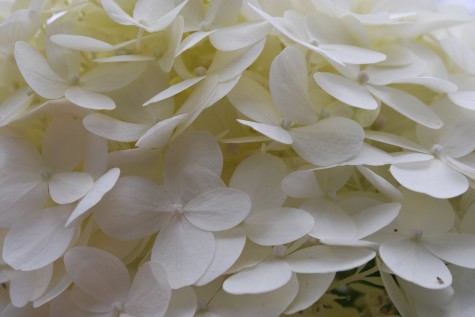
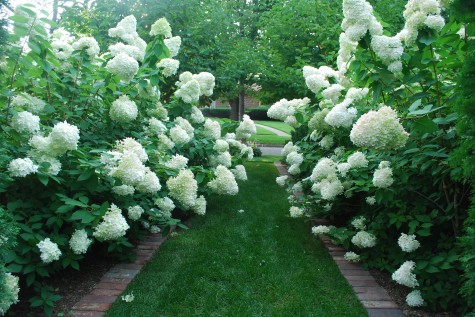
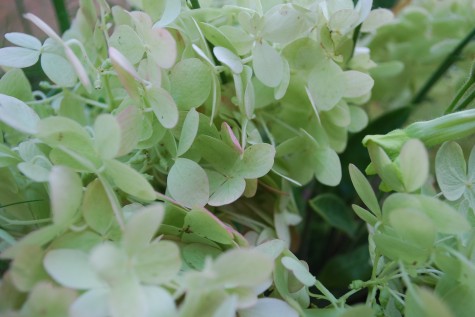

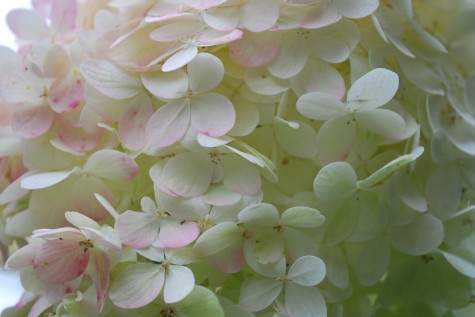
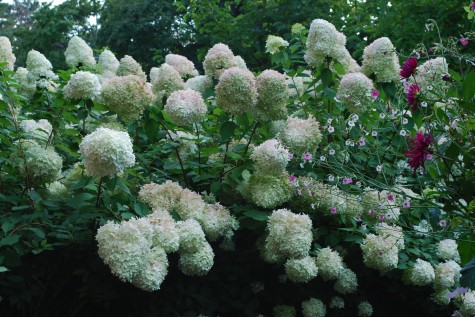
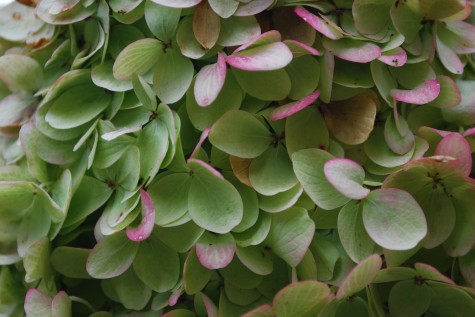
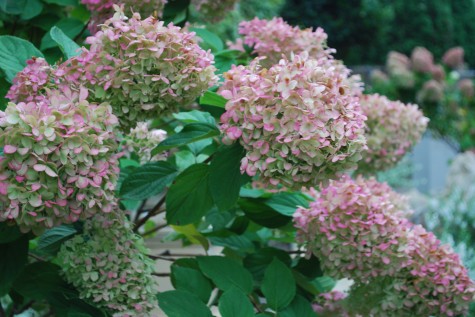
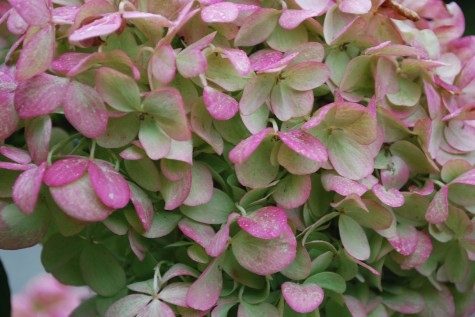

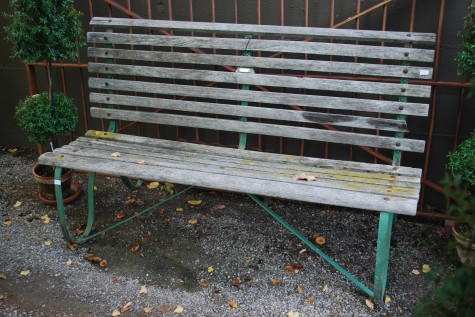 I could easily picture Gertrude Jekyll perched on this old English wood garden bench. Wearing a long skirt, a cardigan, and serviceable brogans, I can hear her in dignified fashion holding forth on some garden design topic or another with as much energy as authority. This straight-backed bench, of slight design and simple materials, is unmistakably English in origin. I have never been to Britain, and I know few people of British extraction-but I have looked at vintage and antique English garden furniture long enough to successfuly guess its origin.
I could easily picture Gertrude Jekyll perched on this old English wood garden bench. Wearing a long skirt, a cardigan, and serviceable brogans, I can hear her in dignified fashion holding forth on some garden design topic or another with as much energy as authority. This straight-backed bench, of slight design and simple materials, is unmistakably English in origin. I have never been to Britain, and I know few people of British extraction-but I have looked at vintage and antique English garden furniture long enough to successfuly guess its origin. 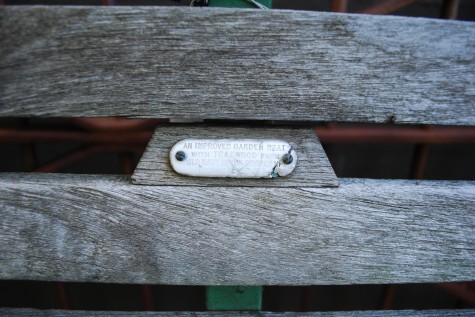
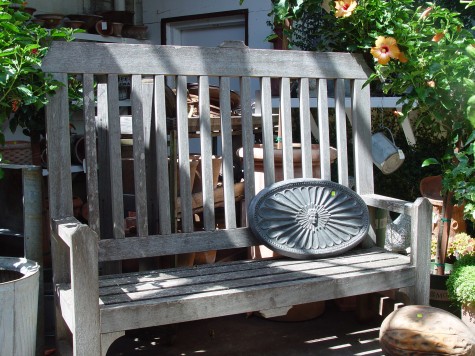 This decidedly English style high backed bench of utterly simple design is a contemporary piece that seems authentic to the culture of its origin. It used to be there were no designers, just craftspeople with good sense about proportion, practicality, and sturdy construction. What worked was also beautiful. This bench doesn’t try too hard. No doubt it will be in service a very long time, given its heft. Its visual heft makes it a good candidate for a special spot in a garden. It could just as easily hold a number of people waiting for a bus, or a pile of kids intent on climbing it.
This decidedly English style high backed bench of utterly simple design is a contemporary piece that seems authentic to the culture of its origin. It used to be there were no designers, just craftspeople with good sense about proportion, practicality, and sturdy construction. What worked was also beautiful. This bench doesn’t try too hard. No doubt it will be in service a very long time, given its heft. Its visual heft makes it a good candidate for a special spot in a garden. It could just as easily hold a number of people waiting for a bus, or a pile of kids intent on climbing it.  Sir Edwin Lutyens was a British architect of great renown whose practice spanned the late 19th century and early 2oth century. Gardeners all over the world know of him, from his association with Gertrude Jekyll. Her steadfast support of his career, and the projects upon which they collaborated are well documented. The most beautiful bench of his design might be the Hestercombe bench, but the bench most often associated with his name is known as the Lutyens bench. The distinctively curved back and scrolled arms have been the inspiration for subsequent English bench-makers; this version is a beauty.
Sir Edwin Lutyens was a British architect of great renown whose practice spanned the late 19th century and early 2oth century. Gardeners all over the world know of him, from his association with Gertrude Jekyll. Her steadfast support of his career, and the projects upon which they collaborated are well documented. The most beautiful bench of his design might be the Hestercombe bench, but the bench most often associated with his name is known as the Lutyens bench. The distinctively curved back and scrolled arms have been the inspiration for subsequent English bench-makers; this version is a beauty. 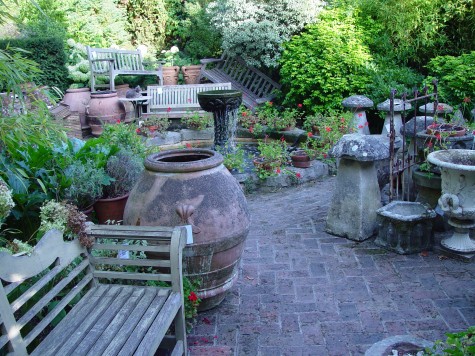 Many of our antique and vintage pieces come from dealers in England. Most of them represent garden objects from of other countries, not just their own. As much as the English gardener of my imagination is keenly interested in plants of all sizes, species and habit, the antique dealers we buy from with are game for anything that might endow a garden with beauty and history.
Many of our antique and vintage pieces come from dealers in England. Most of them represent garden objects from of other countries, not just their own. As much as the English gardener of my imagination is keenly interested in plants of all sizes, species and habit, the antique dealers we buy from with are game for anything that might endow a garden with beauty and history. 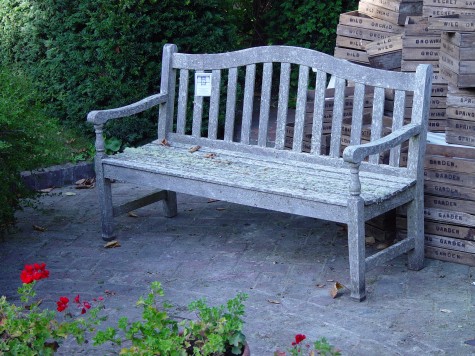 However, one must go to England to find English garden benches. Their modest and sturdy look is so appealing. Even the old benches clearly have many years of service yet to come. A colony of pale green lichens found a home on this bench-no doubt the result of many years of service in some English garden blessed with regular rain.
However, one must go to England to find English garden benches. Their modest and sturdy look is so appealing. Even the old benches clearly have many years of service yet to come. A colony of pale green lichens found a home on this bench-no doubt the result of many years of service in some English garden blessed with regular rain. 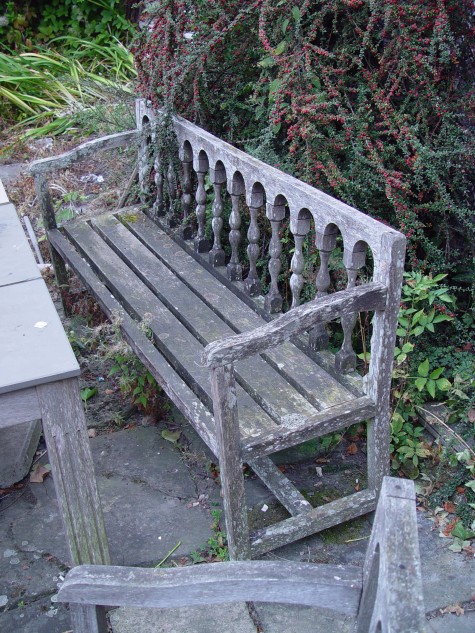 This quietly elegant spindle back bench is likewise mottled with colonies of this lichen and that moss. Its timeworn surface and low key design made it so easy to incorporate into a garden. British wood benches are team players.
This quietly elegant spindle back bench is likewise mottled with colonies of this lichen and that moss. Its timeworn surface and low key design made it so easy to incorporate into a garden. British wood benches are team players.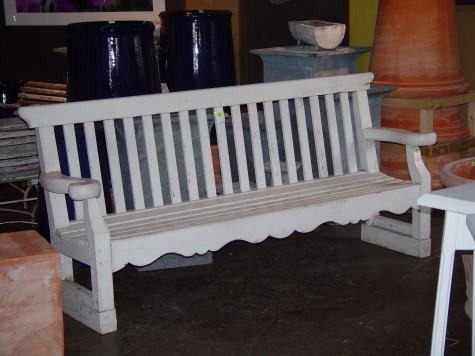 This old painted bench had sustained some dry rot from years of contact with the ground. We stabilized the legs from underneath, and placed it on a gravel terrace. Though 70 years old, I think my clients will enjoy it a good many more years. Painted furniture in a garden has a charm all its own. The frilly skirt and the angled back of this bench is a departure in form from most English benches I have known and loved-but how I like it.
This old painted bench had sustained some dry rot from years of contact with the ground. We stabilized the legs from underneath, and placed it on a gravel terrace. Though 70 years old, I think my clients will enjoy it a good many more years. Painted furniture in a garden has a charm all its own. The frilly skirt and the angled back of this bench is a departure in form from most English benches I have known and loved-but how I like it. 